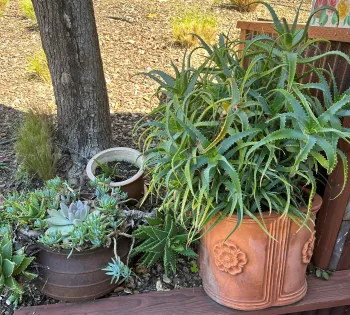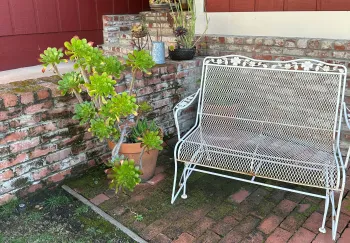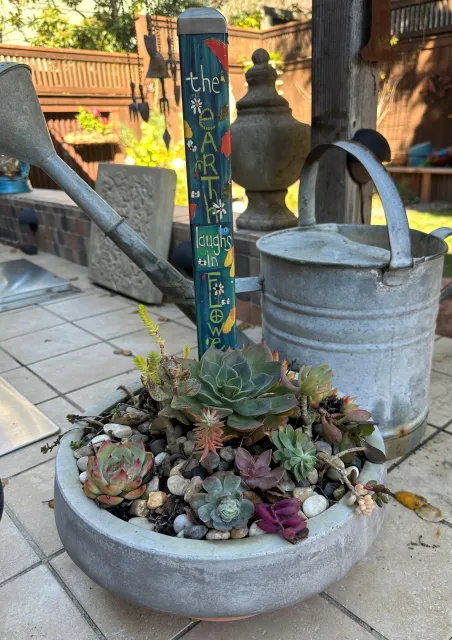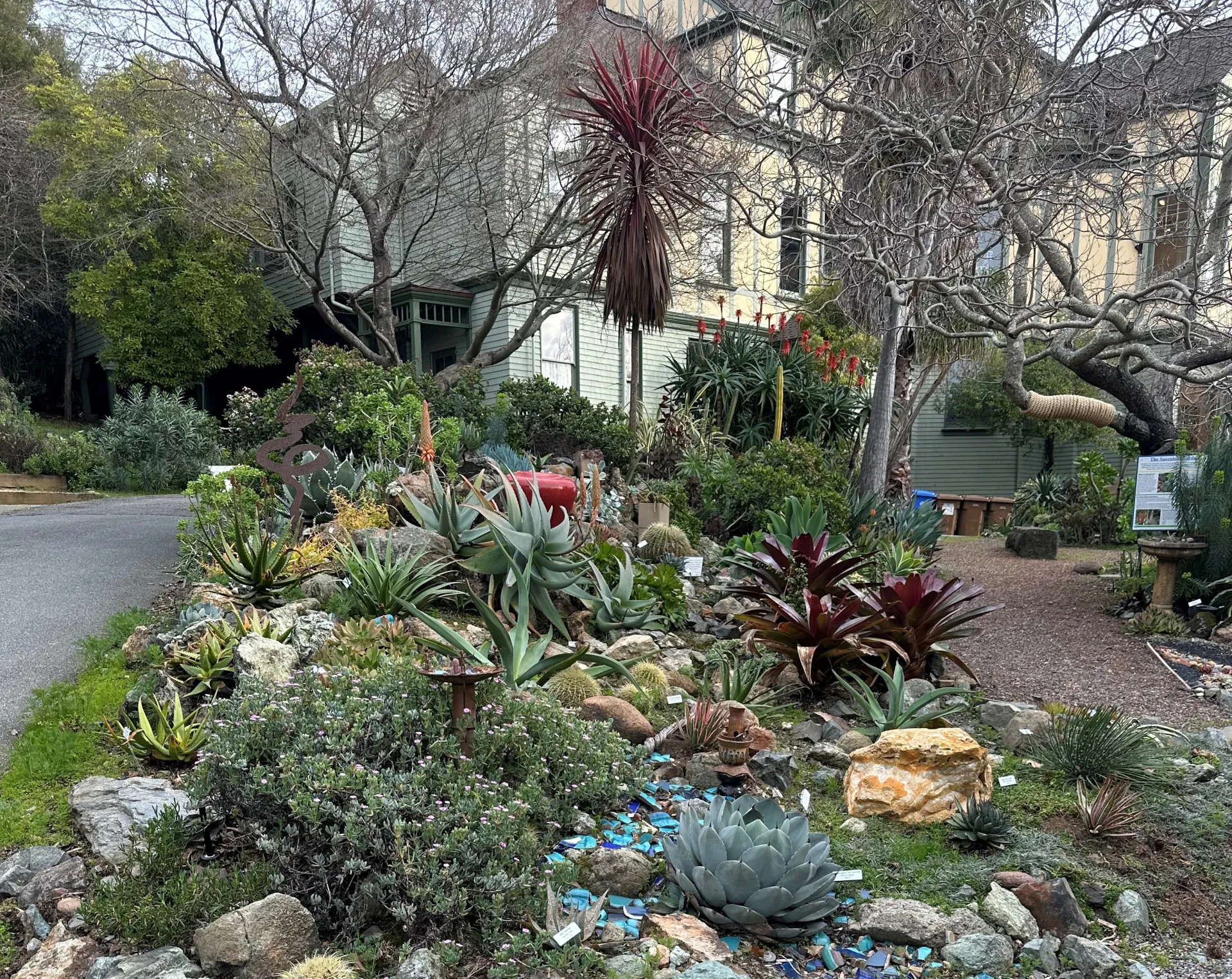
Master Gardeners enthusiastically support finding homes for succulents in your home garden. Once reserved for arid climates, succulents have proven resilient and adaptable. Including succulents in your water-efficient garden makes creating a dynamic, biodiverse, and pollinator-friendly garden easier. The Falkirk Demonstration Gardens include a stunning Succulent Garden showcasing many species and their uses. The garden also features bromeliads, a sub-category of succulents.
Most succulents originate from low-rainfall regions, making them ideal for Marin gardens. Their ability to store water in their thick, fleshy leaves, stems, or roots allows them to survive prolonged droughts, making them perfect for water-wise gardening in California’s Mediterranean climate.
Designing with succulents follows the same principles as planning any garden space. Consider soil, irrigation, lighting, and thoughtful design.

Soil While succulents are highly tolerant of poor soils, they love a nurturing home like any plant. Much of our local soil is clay, and succulents do not like to sit in clay. You can amend your soil with organic matter or plant in raised beds and pots.
Watering Succulents can survive long periods without irrigation, they appreciate occasional deep watering for a lush look. Water deeply but infrequently, allowing the soil to dry between waterings. When integrating succulents with other plants, ensure their neighbors have similar water needs.
Light Needs Like all plants, succulents have specific light requirements. Aloes and many crassulas thrive in full sun, but too much intense sunlight can burn them. Shady spots suit crassula multicava, haworthias, and gasterias, but not most other succulents.

Design Tips As you plan succulent placement, ask yourself about colors, size, textures, and contrasts. You would not want to put a spiky succulent next to where you sit or walk. The variety of colors in succulents is abundant, so have fun with them. Scale is important. If you are planting in a landscape, consider larger varieties in the back, medium-sized plants in the middle, and maybe a creeper in the front. In pots, thrillers (larger or taller plants) go in the middle, chillers (medium-sized plants) go around them, and spillers (hanging plants) go in front so they can drape over. Smooth or spiky leaves may like a more textured plant next to them to help show them off.
Maintenance Succulents are low-maintenance, but a few tasks help them thrive. The UC IPM suggests removing dead leaves to prevent pests and rotating potted succulents for even growth. If a succulent becomes leggy, prune it back to encourage fresh growth. The best time to trim your succulents to keep a more compact shape is in early spring, so they can quickly restore themselves during summer’s rapid growth. You can also take a cutting from the stems and create new plants by re-rooting them.
Join Us for the Succulent Sale! The Marin Master Gardeners are hosting their annual succulent sale on Saturday, June 14, from 9 a.m. to 12 p.m. at the Falkirk Cultural Center’s rear parking lot on Mission Street in San Rafael. There will be individual plants, potted arrangements, and bromeliads for sale. Experienced Master Gardeners will be on hand to answer your questions. https://www.youtube.com/watch?v=c5uRa4Shya0&t=2s
By incorporating succulents into your garden, you conserve water and create a beautiful, resilient landscape. Whether you're a novice or an experienced gardener, the sale offers a chance to find unique varieties and gain expert advice. We hope to see you there!
By Dot Zanotti Ingels, May 24, 2025


